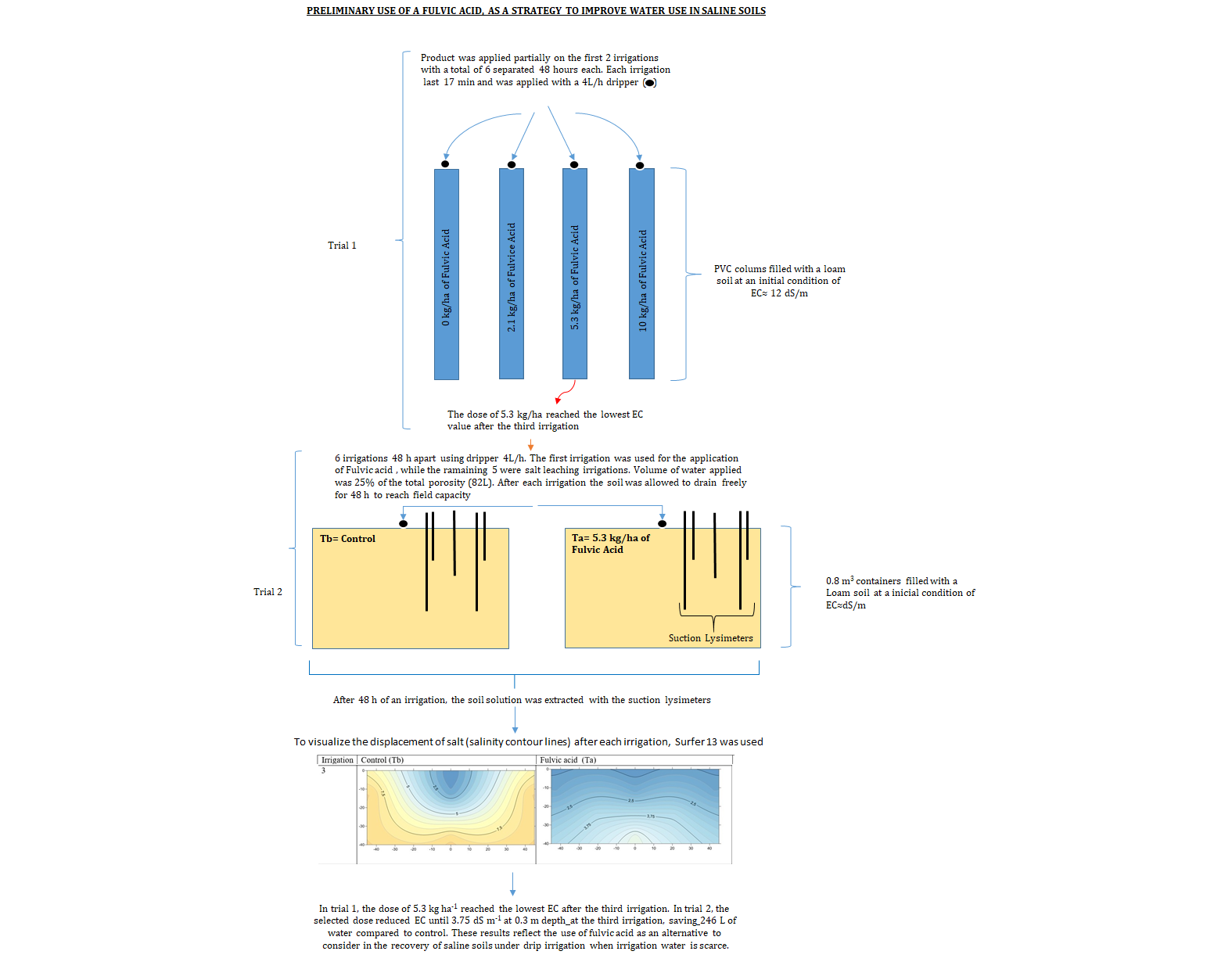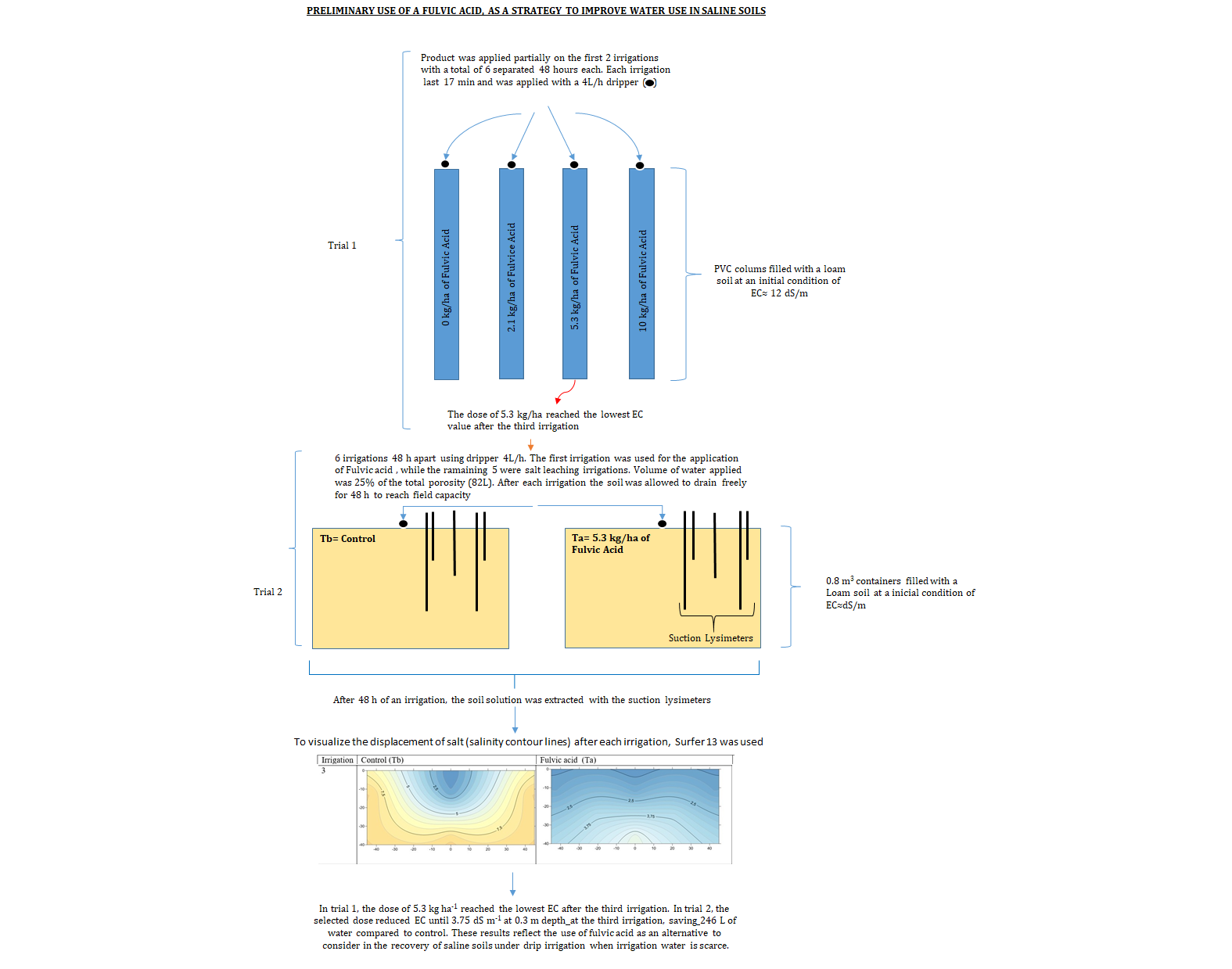Preliminary use of a fulvic acid, as a strategy to improve water use in saline soils
Preliminary use of a fulvic acid, as a strategy to improve water use in saline soils
DOI:
https://doi.org/10.48162/rev.39.016Keywords:
soil conditioner, humic acid, soil electric conductivity, leaching fractionAbstract

An evaluation of a fulvic acid (FA) was made in a Loam soil, by selecting the best dose to achieve salt displacement under a drip emitter. In trial 1, PVC columns were filled with a loam soil and irrigated with a KCl solution of electrical conductivity (EC) of 12.5 dS m-1. Once the soil solution EC reached the value of the KCl solution, FA doses of 0, 2.1, 5.3 and 10.5 kg ha-1 were applied. The bulk electric conductivity and soil chemical properties were evaluated after 6 irrigation cycles. In trial 2, the same soil salinized with the KCl solution was placed in 0.8 m3 containers. Two irrigations treatments were performed: a control and the best FA dose from trial 1. The displacement of the salt bulb created from irrigation with a dropper in the soil profile was characterized. In trial 1, the dose of 5.3 kg ha-1 reached the lowest EC after the third irrigation. In trial 2, the selected dose reduced EC until 3.75 dS m-1 at 0.3 m depth at the third irrigation, saving 246 L of water compared to control. Additionally, the salinity bulbs were more horizontally extended in the FA treatment.
Highlights:
- Application of FA (5.3 kg ha -1) reduced the water use by 50% compared to leaching carried out exclusively with water.
- The use of Fulvic acid showed to be an alternative to consider in the recovery of saline soils under drip irrigation when irrigation water is scarce.
- Little or not residual effect was found after the use of Fulvic acid.

Downloads
Published
Issue
Section
License

This work is licensed under a Creative Commons Attribution-NonCommercial-ShareAlike 3.0 Unported License.
Aquellos autores/as que tengan publicaciones con esta revista, aceptan las Políticas Editoriales.


